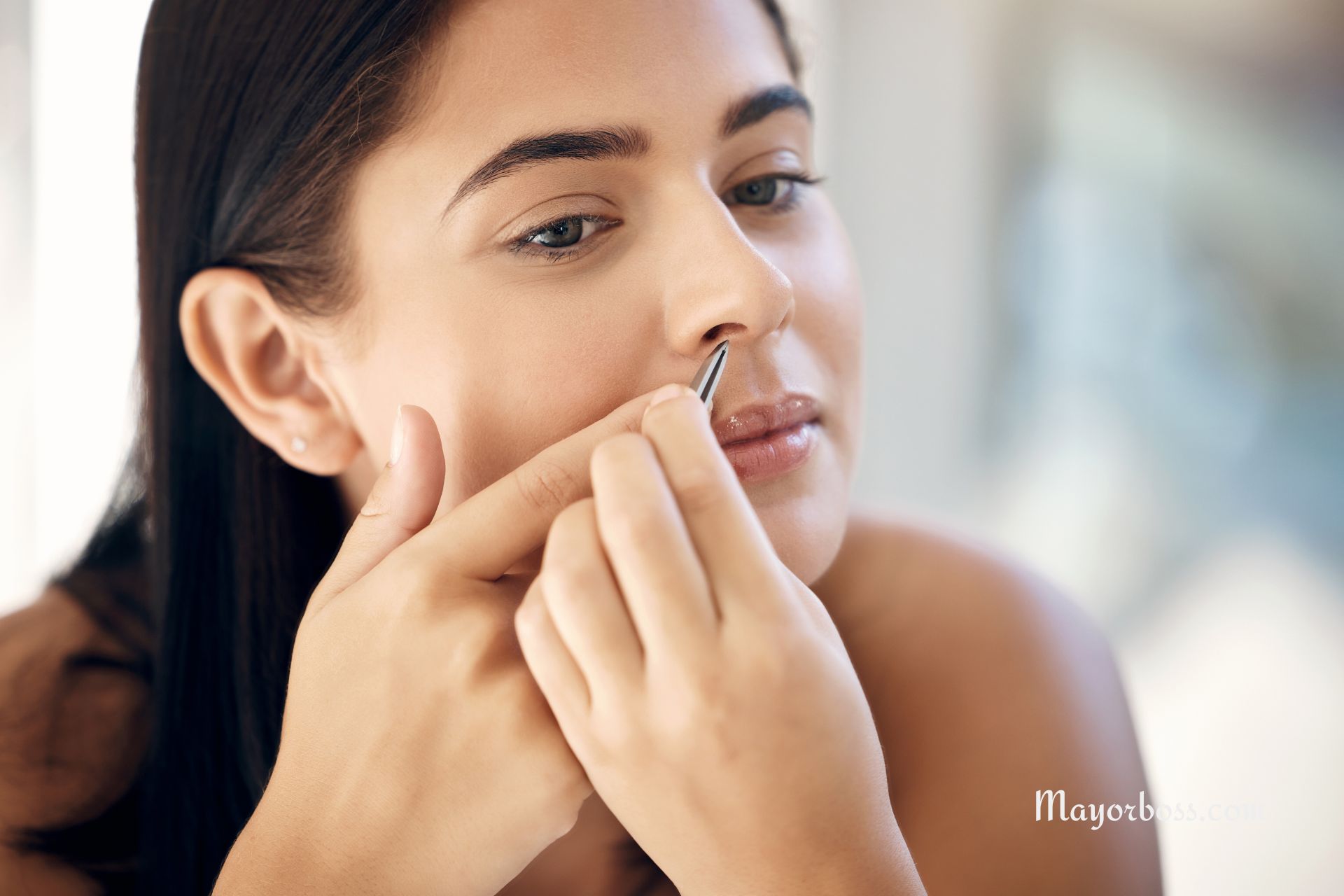Side Effects of Plucking Nose Hairs
The Purpose of Nose Hairs
Nose hairs help filter dust, germs, and other small particles in the air before they get into your lungs. They act like a natural shield that blocks harmful things from entering your body. When air passes through your nostrils, these hairs trap dirt and bacteria, helping stop them from traveling deeper.
Some people think that removing these hairs makes them cleaner, but plucking them too often can weaken your nose’s defense system and potentially lead to problems such as irritation and infection.

Common Side Effects
One of the most common side effects of plucking nose hairs is irritation. When you pull out a hair, it is taken from its root, which can hurt and leave a small open area in the skin. This spot can become sore or tender. You might also notice redness, itching, or swelling. If you keep plucking, the inside of your nose might stay irritated for a long time.
Another potential problem is nosebleeds. The inside of your nose has thin blood vessels that can bleed easily if irritated. Pulling out hairs that are close to these vessels can cause minor bleeding that might come back if the nose keeps getting irritated. Over time, repeated plucking can make your nose drier and lead to crusting, raising the chance of future nosebleeds.
Risk of Ingrown Hairs
An ingrown hair is one that grows back into the skin instead of out. Plucking makes this more likely, especially if the hair snaps below the skin’s surface. The result can be a painful bump or a sore that might take a while to heal.
When a hair is stuck under the skin, your body sees it as a foreign object. This can lead to redness, swelling, or even pus. Treating ingrown hairs early can help prevent worse infections.
Infection Concerns
When you pluck nose hairs, you create small breaks in the skin. Germs, especially a type of bacteria called Staphylococcus, often live inside the nose. With an opening in the skin, these bacteria can enter and cause an infection, such as folliculitis. Folliculitis may lead to redness, pain, or discharge.
In serious cases, the infection can spread. One example is nasal vestibulitis, which causes redness, swelling, and crusting at the opening of the nose. If it gets worse, it can turn into cellulitis, a deeper skin infection. Very rarely, the germs can travel through the bloodstream and become a serious health issue.
Alternative Approaches
Rather than plucking, try trimming. You can buy small scissors with rounded tips that are made for nose hair grooming. Trimming lowers the chance of getting ingrown hairs since you do not pull the hair out by the root.
Another option is a nasal hair trimmer. These battery-powered devices have rotating blades that safely cut visible hairs without yanking them out. Most people find them easy to use and comfortable.
If you decide to shave, be cautious. Some razors are made for the delicate skin around the nostrils, but shaving can still irritate the area. Always clean and disinfect any tool you use to lower the risk of spreading bacteria.
When to Seek Medical Advice
You might get a little redness or a small nosebleed if you pluck nose hairs once in a while. But if you have ongoing swelling, pain, or pus, you should see a healthcare provider. These signs might mean you have an infection that needs treatment.
If you often get nosebleeds after plucking, talk to a doctor. You may have injured blood vessels or developed another nasal problem that needs care. A medical exam can help find the root cause and suggest ways to heal.
Conclusion
Plucking nose hairs might look like a quick fix for extra hair, but it can lead to issues like irritation, nosebleeds, ingrown hairs, and infections. Your nose hairs are a key part of your body’s defense against germs, so yanking them out can make it easier for bacteria to get in. For a safer approach, trim your nose hairs with special tools and keep an eye out for any warning signs. If problems persist, reach out to a healthcare professional.
